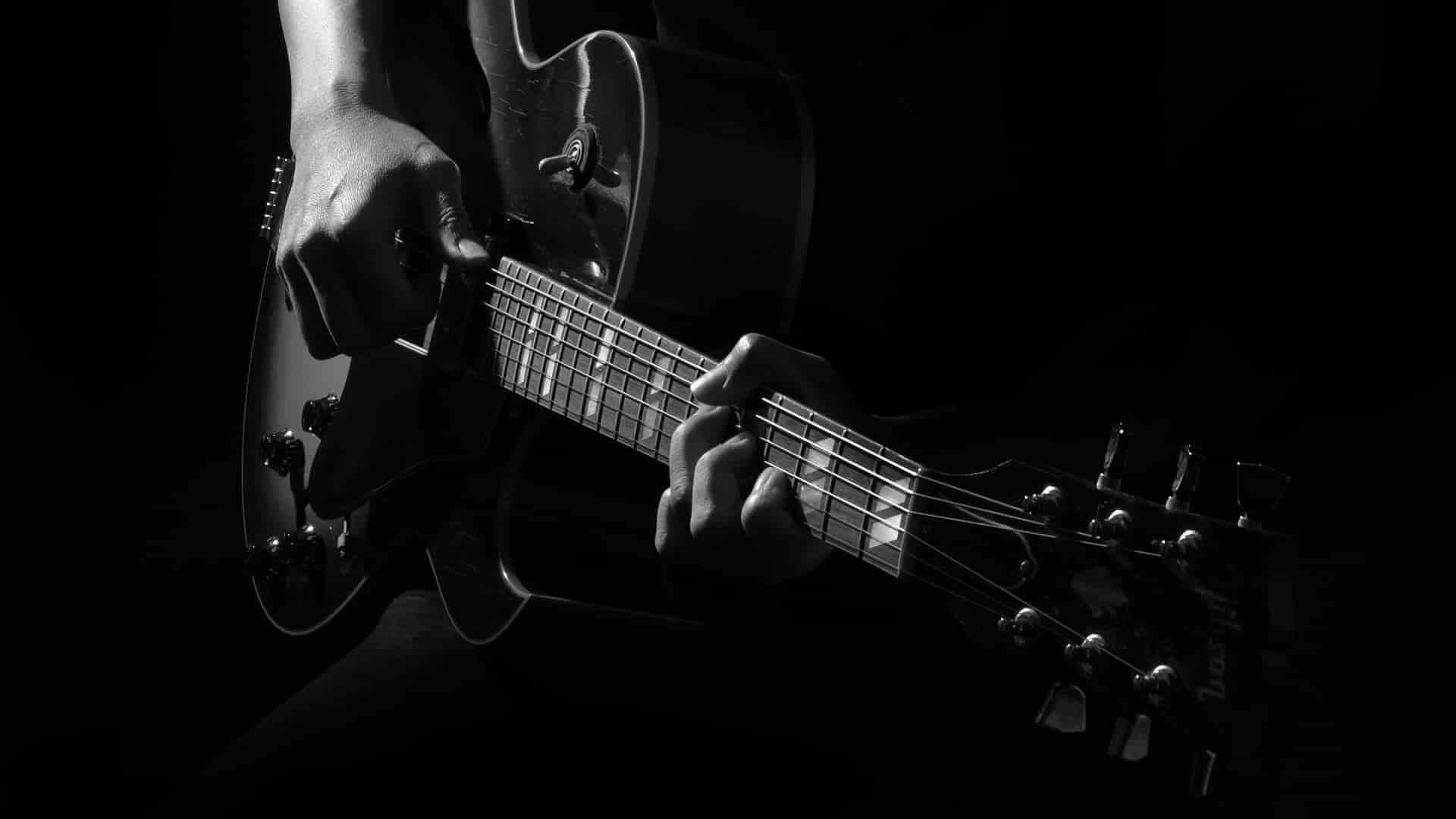GSCC Lesson 14
Revision of Lesson 01-13
If you are new to this series, here’s the links to past lessons:
We had covered all the family chords and their siblings in key of C and G Major:
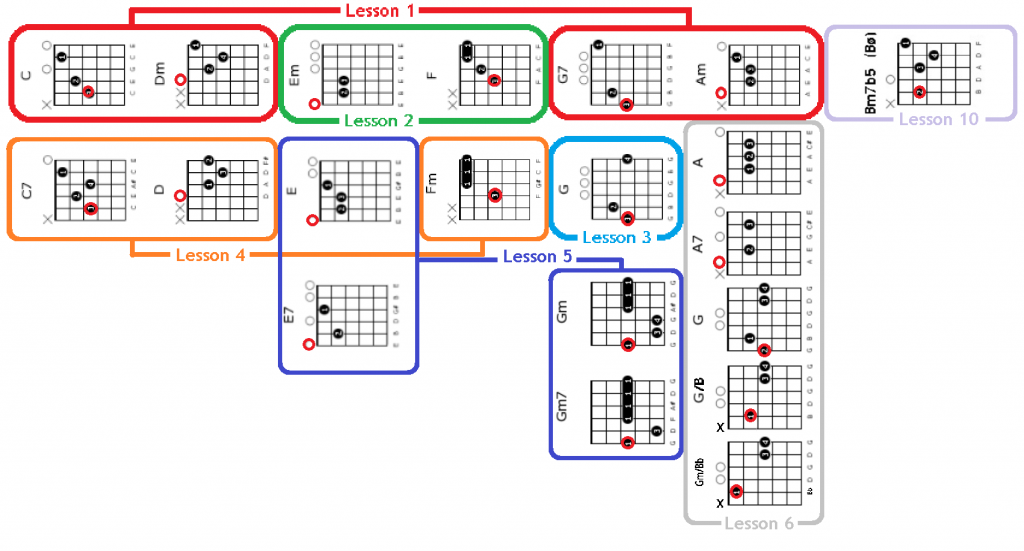
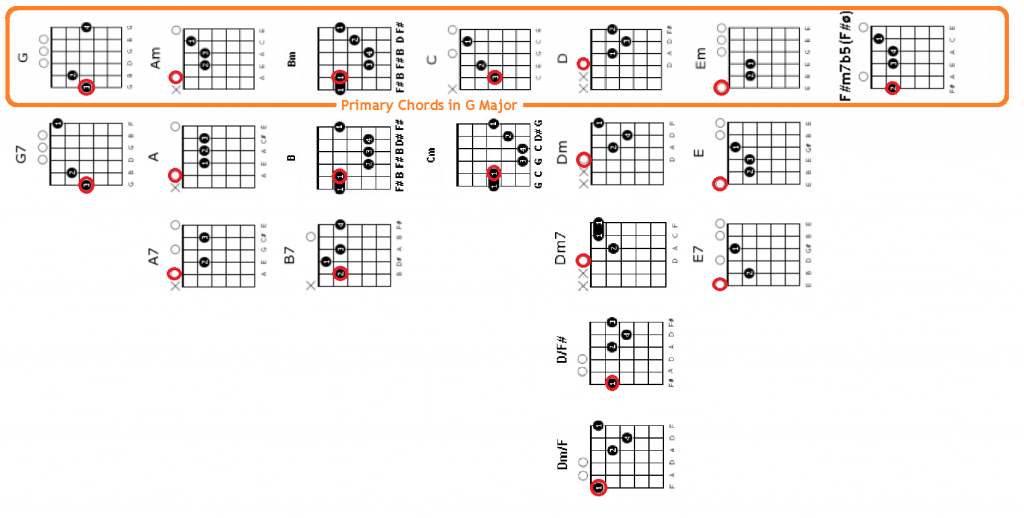
Key of C major and G major are common keys used by guitarist to play sing-along guitar.
We also looked at the guitarist best friend – CAPO , and it’s application.
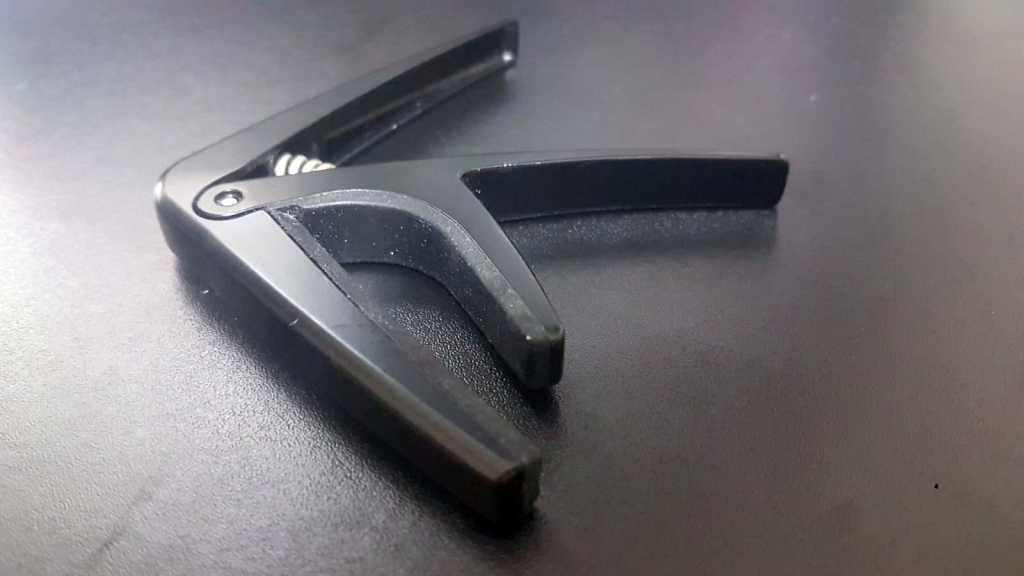
When we use the CAPO in conjunction with chords from C and G keys above , we are able to play almost every pop songs we wanted to play.
We have also looked at some basic strumming patterns:
| 1 | One strum per beat |
| 2 | Up-stroke strumming |
| 3 | Strumming lightly on first few strings |
| 4 | 16 beat strum |
| 5 | Campfire Strum |
| 6 | “Chuck” Strum |
| 7 | 3/4 Strum |
| 8 | 6/8 Strum |
And we had explored some basic pluckings.
| 1 | 8 beat pluck #1 |
| 2 | Double string pluck |
| 3 | 3/4 Pluck |
| 4 | “Alternate Bass” Pluck |
| 5 | 6/8 Pluck |
Last week, we learned to create your own strumming pattern,
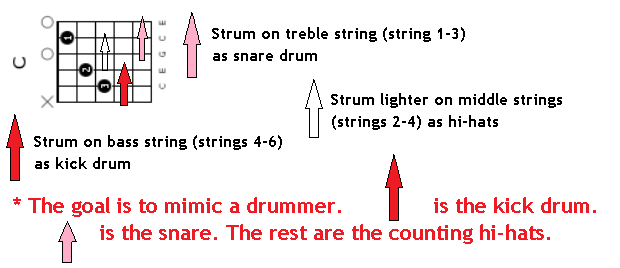
and plucking patterns.
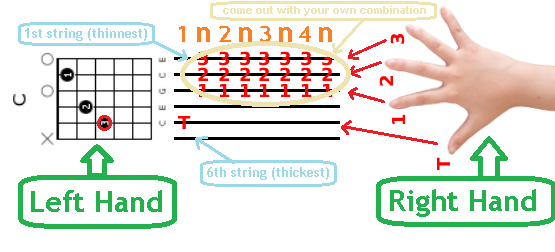
And how to search for guitar chord charts online
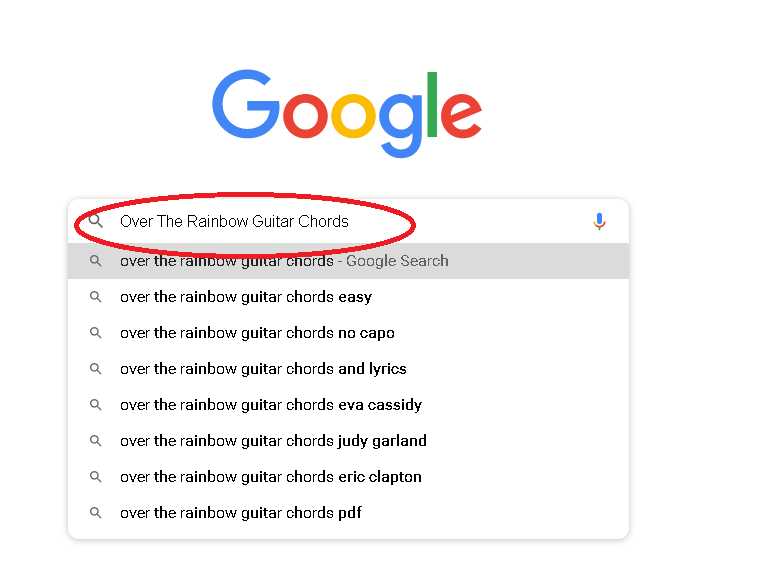
We also learn the melody notes for key of C Major,
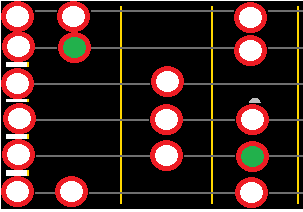
and G Major too.
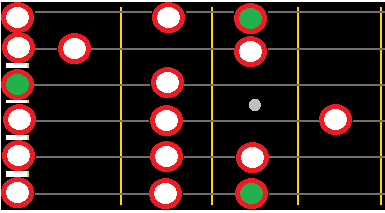
And of course, we had fun learning all these songs !!
Click here to ask a question …
Slap Rhythm
A very popular rhythm guitar technique is called “Slap Rhythm”. This is achieved by using your right hand to slap on the strings at your strumming/plucking area to create percussive effect (just like the Chuck Strum we did before).
Due to the motion of the technique, the Chuck Strum is more for the strumming,
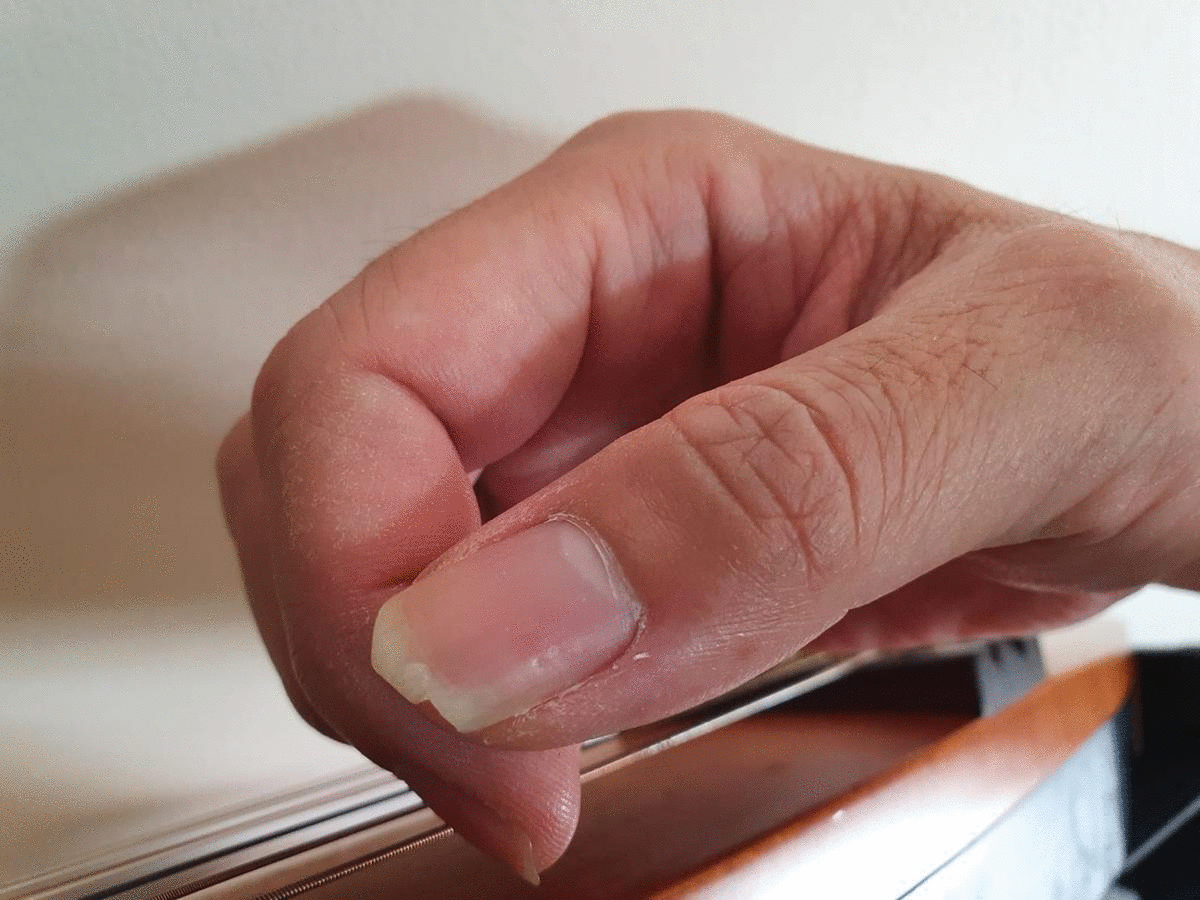
for plucking, we have the “Slap Rhythm”
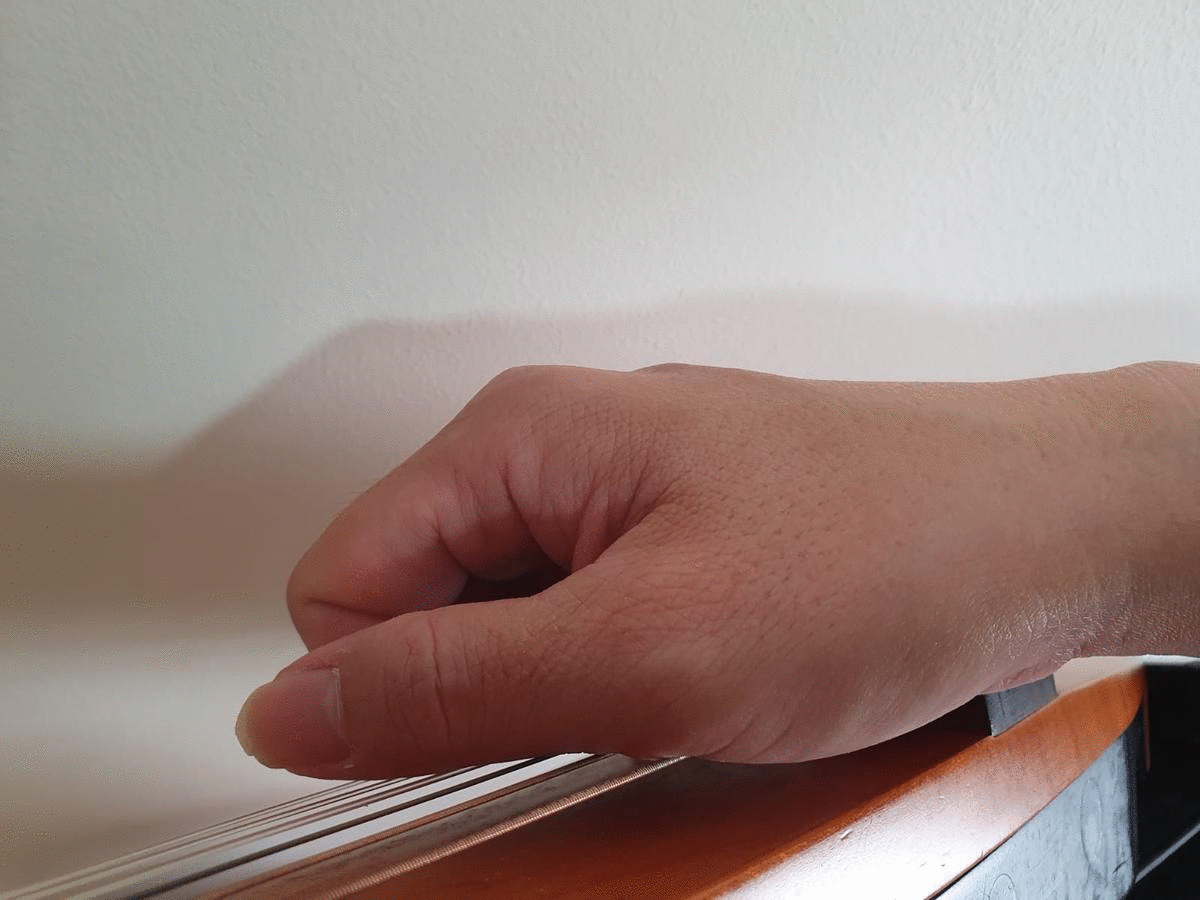
The following diagram shows the Slap Rhythm. The XXXXXX denotes the slapping part.

Try to practice it slowly with the metronome beats:
After you had mastered the motion, try them out with chord progression:
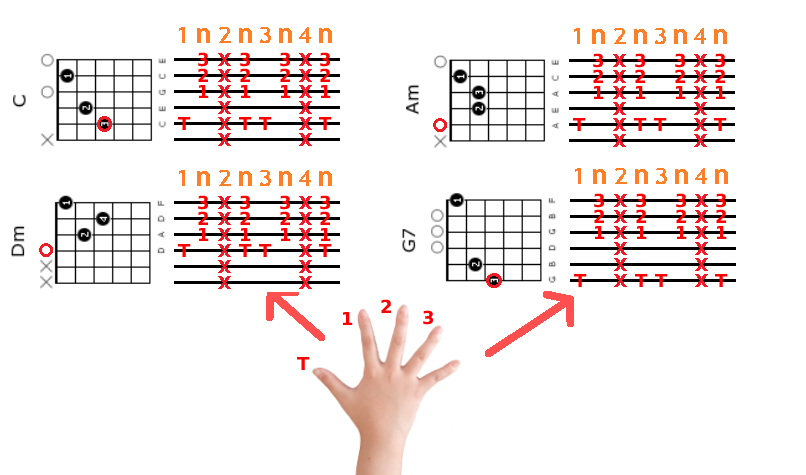
Here’s the video for you to practice along:
After you had gained the confident of playing through chords, let’s apply this new pattern to songs!
Variation of the “Slap Rhythm”
Here’s a slight variation to the pattern (skipping the “T” at the 3rd beat, sustaining the 2nd “n”):
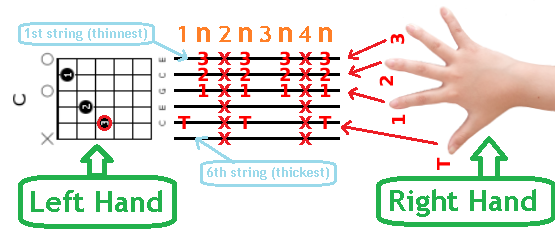
Try to practice it slowly with the metronome beats:
After you had mastered the motion, try them out with chord progression:
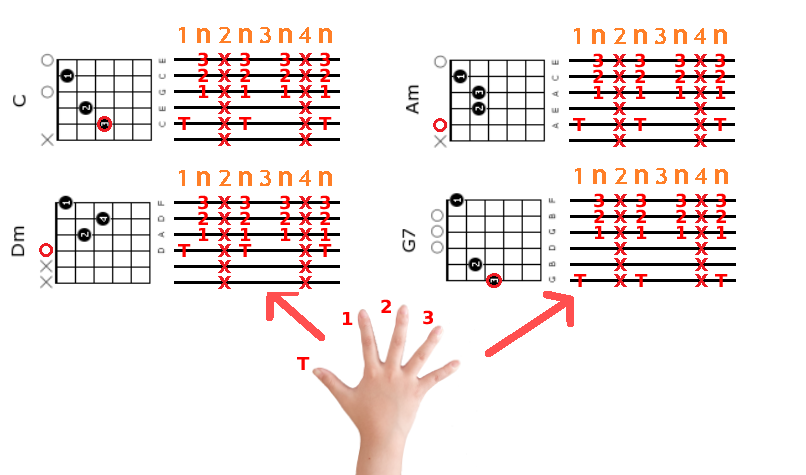
Here’s the video for you to practice along:
After you had gained the confident of playing through chords, let’s apply this new pattern to songs!
Click here to ask a question …
How to make “Happy Birthday” happier?
Last week, we learned how to play “Happy Birthday” melody on guitar:
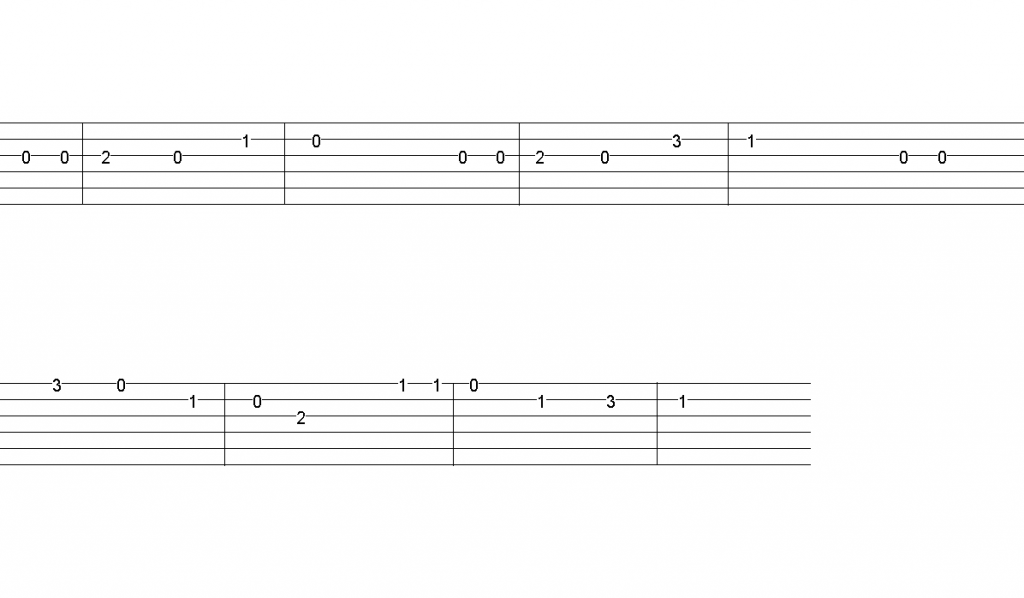
The melody is nice, but it may sound a bit empty and plain.
Let’s see if we can make it sound nicer and fuller.
Here’s the chords to the song:
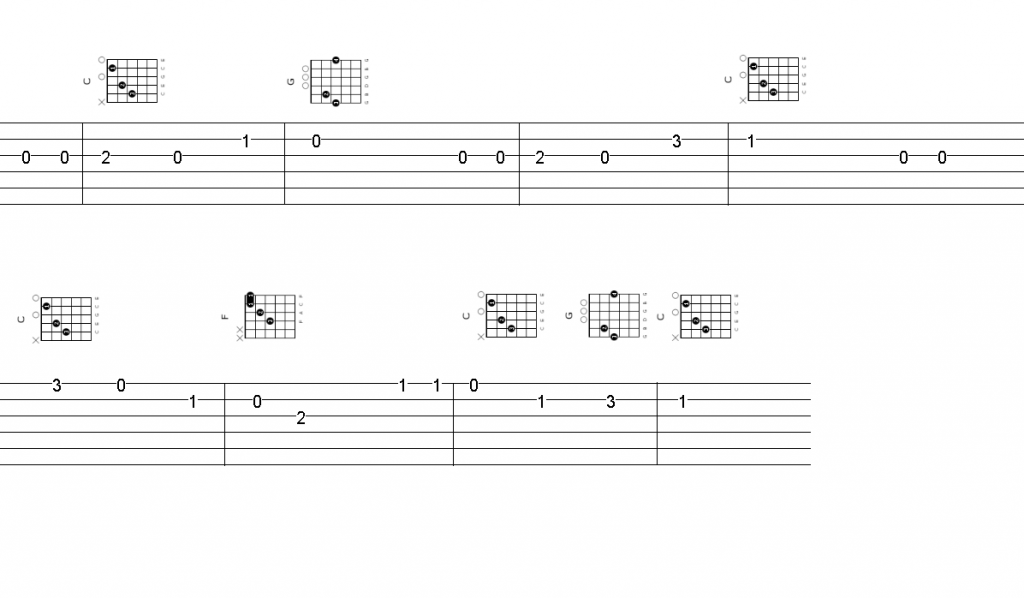
We can actually combine the chord and melody together! The trick is to play the chords “below” the melody notes. This means we are gonna play part of the chords.
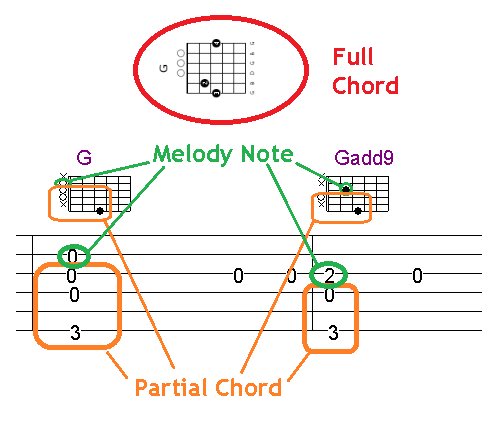
Knowing this concept, let’s apply it to the entire song. Here’s the demonstration:
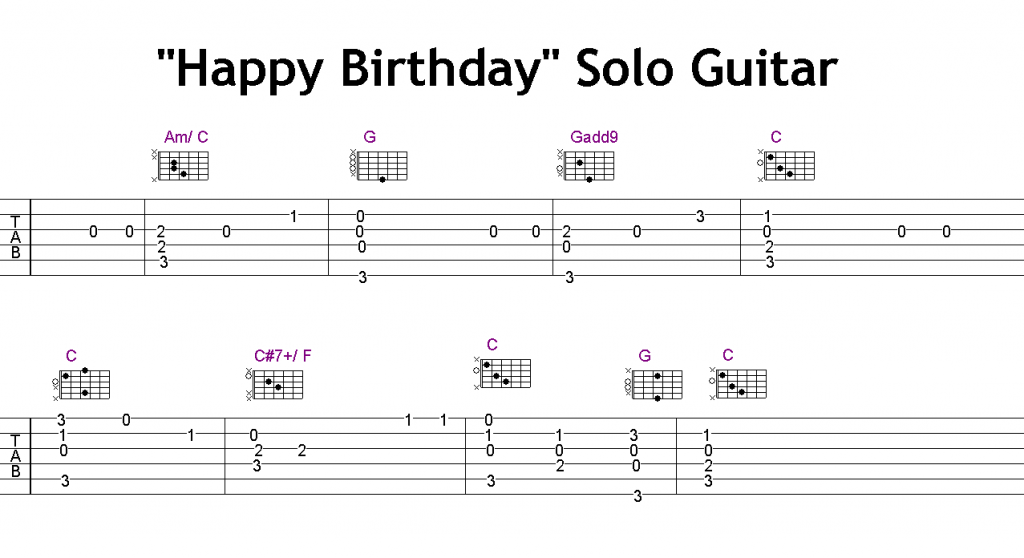
Congratulations!! You are playing your first ever solo guitar instrumental song!!!
You are playing it alone without accompaniment of any other instruments (including vocal), like what the pianist does, that is why it is called solo guitar.
It is also called Chord Melody Guitar because basically you are playing both the chord and melody guitar together.
If you do not sing, this is a great way to present the melody of a song. If you do sing, you can use this technique to play the intro or interlude of the song.
